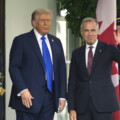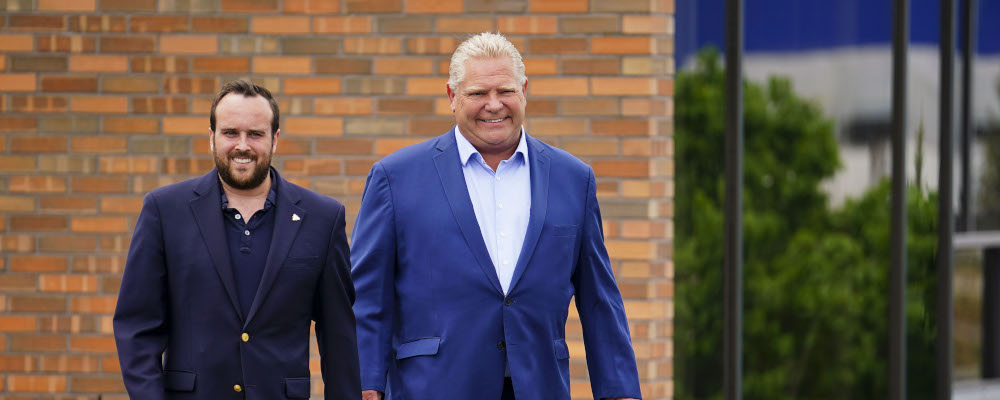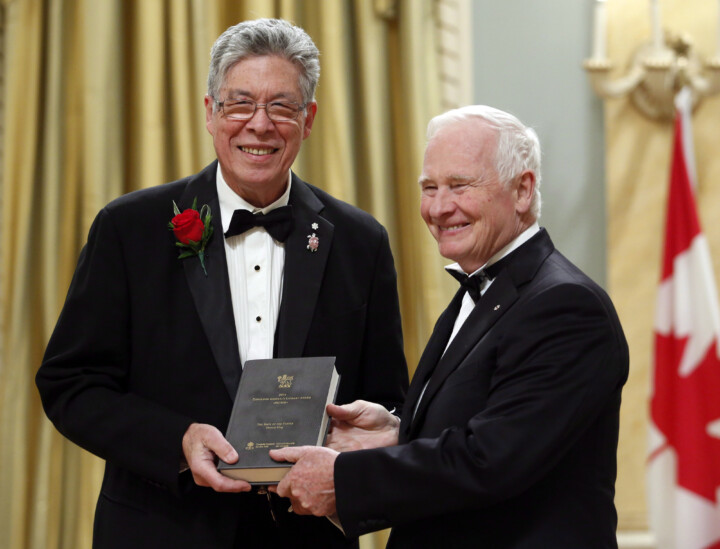For several decades now the budget process, both at the federal and provincial levels, has evolved to become as much a narrative exercise as it is a financial one. Governments seek to outline a broad story arc for their planned actions, tying together what can appear to be disparate initiatives under core thematic buckets.
Election budgets are even more focused on narrative than usual.
The Ontario Progressive Conservative Budget, tabled right before the provincial election, and again this past week, was no exception. It focused on five core pillars, which formed the basis of the PC election pitch. Given the sizeable victory on June 2nd, voters seem to have connected with these themes.
I have worked on five federal budgets and four provincial ones. For full disclosure, I served as vice-chair of Ontario’s finance committee during this most recent budget. Throughout all of these, I have seen and been part of crafting these budget “stories.”
Most of the media coverage about this budget will focus on that narrative. Is the government living up to the promise it contains? How important was it in helping the PCs secure victory? Does it adequately address the challenges of today?
This isn’t a piece like that.
This is a story about the small initiatives often buried within budgets than can have big impact. These are often the success stories of MPs or staff, who work tirelessly throughout the year to bring a small idea from conception to implementation.
On page 128 of this most recent Ontario budget, one such item can be found.
It reads:
An example of a children’s health investment is $97 million over three years to improve the experiences and lifelong outcomes for more than 1,100 children and youth with complex special needs at the Children’s Hospital of Eastern Ontario (CHEO), Holland Bloorview Kids Rehabilitation Hospital and McMaster Children’s Hospital. Funding will support a pilot project for an integrated model to provide key health and social services, including hospital-based assessments, access to interdisciplinary clinical teams, medical care and behaviour therapy.
It was a small paragraph in an otherwise dense book: $97 million in a $190 billion plan. And it didn’t quite fit into the broader narrative pieces of highways, hospitals, and economic growth.
But for the people involved in getting those two sentences included, it was a win worthy of a big celebration.
I was fortunate to be one of those people.
I have written elsewhere of my experience growing up with a younger brother with special needs. It was the driving force for my motivation to enter politics and continues to hold an important place in my heart.
For many parents across the province whose children are diagnosed with special needs they are shocked to learn that clinical therapies for their children are often not fully funded. Unlike other medical issues, special needs treatments are often funded through a web of social services and health-care envelopes that can be challenging to navigate and access. Moreover, services often lack cohesion for the patient and family.
Far too often, these challenges lead to crises, with desperate families showing up in hospital emergency rooms. The COVID-19 pandemic worsened the stress on these families. A Queens University study has detailed and quantified these growing challenges.
My own family lived through this experience.
When my brother entered his teen years, he struggled with severe behavioural issues and epilepsy. My parents and I spent weeks on end trying to help him cope with either terrible tantrums or seizures. Both problems necessitated regular trips to CHEO for meetings with psychiatrists and neurologists.
I was just 14 at the time, and while I didn’t have the wisdom of age, I think I brought a certain childhood clarity to these appointments.
I remember one meeting vividly. We were sitting at the hospital with the psychiatrist who was recommending a change to my brother’s medications. It was easily the tenth such meeting we’d had over the course of several weeks.
“Before we finalize this change,” the doctor said, “you’ll have to meet with the neurologist to make sure this won’t impact his seizure activity. If it will, you can schedule another meeting with me to discuss.”
I stared at the doctor and then at my parents.
“But the neurologist is just three floors above us. Why in the world can’t we just get everyone in here for a meeting at once?” I asked.
It seemed like the obvious question. Most importantly, it was what was in my brother’s best interest.
But of course, it just “wasn’t how things worked”.
Our story is no different from the thousands of others unfolding across Ontario. While we are fortunate here to have a number of highly qualified and effective clinicians covering a range of fields, we lack a coordinated approach that will put the patient first.
And so, just over a year ago, a group of us including stakeholders, staff, and government officials asked ourselves a question: how can we do better?
The problem was as complex as the children who needed the support. But in developing a solution, the stakeholders started from a simple premise: kids with these challenges should get wrap-around and seamless clinical support. In other words, a child with down-syndrome and bipolar disorder, or autism and epilepsy, should be able to benefit from a team of clinicians and allied health professionals working in concert to tackle their challenges. Perhaps it might be a psychiatrist, a behavioral therapist, and an occupational therapist. Or, as was the case for my brother, perhaps a psychiatrist and neurologist.
Thankfully, the three stakeholders involved had the clinical human resources and experience necessary to fill that gap. But how could we harness it? How could we identify the kids that needed it? And, most critically, how would we fund it?
“The vast majority of stories these days about politics and government focus on negatives. The latest scandal. The longest delays. The largest funding mishaps.”
CHEO in Ottawa, Holland Bloorview Children’s Rehabilitation Hospital in Toronto, and McMaster Children’s Hospital in Hamilton set about answering the first two questions. We on the government side set about answering the third.
Any initiative that would require new money, like this one, typically has to make its way through the budget cycle—a process that starts with determining what ministry would house the initiative and ultimately fund it.
From the start, there was a strong consensus that funding should be drawn from both the Ministry of Children, Community and Social Services (MCCSS) and the Ministry of Health. While children with special needs receive much of their government support through MCCSS, it was clear that these children were struggling with health challenges as well. A jointly funded pilot would be a fantastic way to continue breaking down ministerial siloes—a common challenge faced by all governments.
Moreover, this program would break ground in another important way. Many programs for children with special needs are “diagnosis specific” (i.e. you need a specific diagnosis to access supports). This program would be different by putting the child and not the diagnosis at the centre. Preliminary criteria for eligibility would focus on children with “multiple, medical, neurodevelopmental and mental health comorbidities relating to psychiatric or developmental disorders.”
Through the use of their own entry points (e.g. emergency room visits, existing clinical services, community partnerships, etc), the stakeholders felt confident that they could develop “catch points,” where the children could be identified early and pulled into support. A comprehensive needs assessment would then determine a child’s eligibility. And, with the additional resources proposed, they would be able to better ensure coordination and collaboration between clinical partners in providing wrap-around services. It would draw on a model of care that has shown promise in an array of child development settings.
By pitching this as a pilot program, we were able to propose the concept as a test case that could be measured and evaluated to determine impact. With strained fiscal capacity, governments across the globe are increasingly turning to evaluative methods, including borrowing the corporate world’s Key Performance Indicators (KPIs), to determine the efficacy of dollars spent. The stakeholder partners would be responsible for working with government to determine evaluative parameters.
With a solid plan developed and a case to be made, our team set about working to have this pilot funded in the budget. It’s a competitive process, given the plethora of good ideas and worthy causes up for consideration. But we made our case, citing the above points, and, during the budget’s first tabling before the election, we were elated to see our hard work pay off.
Trapped within those two sentences in the budget were an array of exciting developments: the breaking down of government siloes through joint funding; a move towards a gold standard wrap-around model of care; a desire to treat the patient not the diagnosis; and an initiative that bet its success on proving its competency through evaluative metrics.
Not too shabby.
After the announcement, CHEO CEO Alex Munter said, “the children and families that will benefit most from this investment live with unimaginable struggles, often having to fight for access to care and to avoid falling through the cracks. Sometimes they end up making frequent visits to the emergency department or even being admitted to hospital because of lack of services. Every child and youth deserves to lead their best life with healthier outcomes and simpler journeys.”
“This story is a reminder of the good that is taking place every day in governments across the country.”
He could have easily been describing my family’s journey with my brother.
Not much will be written about this initiative in the papers or talked about in the media. And undoubtedly there may be some who read this piece and think I’m just “patting myself on the back”.
But this is a story that needs telling.
Beyond being exciting for the many families it will benefit, there is a broad point worth making.
The vast majority of stories these days about politics and government focus on negatives. The latest scandal. The longest delays. The largest funding mishaps.
And all of these are important. We need these stories to hold our governments accountable about the use of our scarce taxpayer dollars and the efficacy of our institutions.
But we also need to hear the good. Without the positives, it becomes easier and easier to view our political system as unresponsive, incompetent, or alien to us.
This story is a reminder of the good that is taking place every day in governments across the country. A tale of the government ecosystem at work: stakeholders, staff, civil servants, and politicians coming together to tackle a problem and try a solution. It may or may not succeed, time will tell. I’m betting on the former. Regardless, it will serve to bring hope to families that need it. These challenges aren’t simple, and we need to be willing to try solutions.
And so, when a new budget comes out, take some time to move past the narrative and reflect on the passion, drive, and commitment that goes into those documents and initiatives. And, most importantly, take some time to celebrate the small victories included within. You’ll find countless examples of them.
They are the stories of our democracy in action. And that’s worth celebrating.
Recommended for You

Letter to a minister: What the federal government should—and shouldn’t—do to solve the housing crisis

‘Albertans do not believe Canada works’: Rick Bell on whether the pipeline deal hurt Alberta separatism

Seven Canadian provinces rank below all 50 U.S. states for economic freedom of residents: Study

‘They’re tired of the bickering’: The Roundtable on why Canada’s ‘moderate middle’ supports the Carney-Smith pipeline deal



